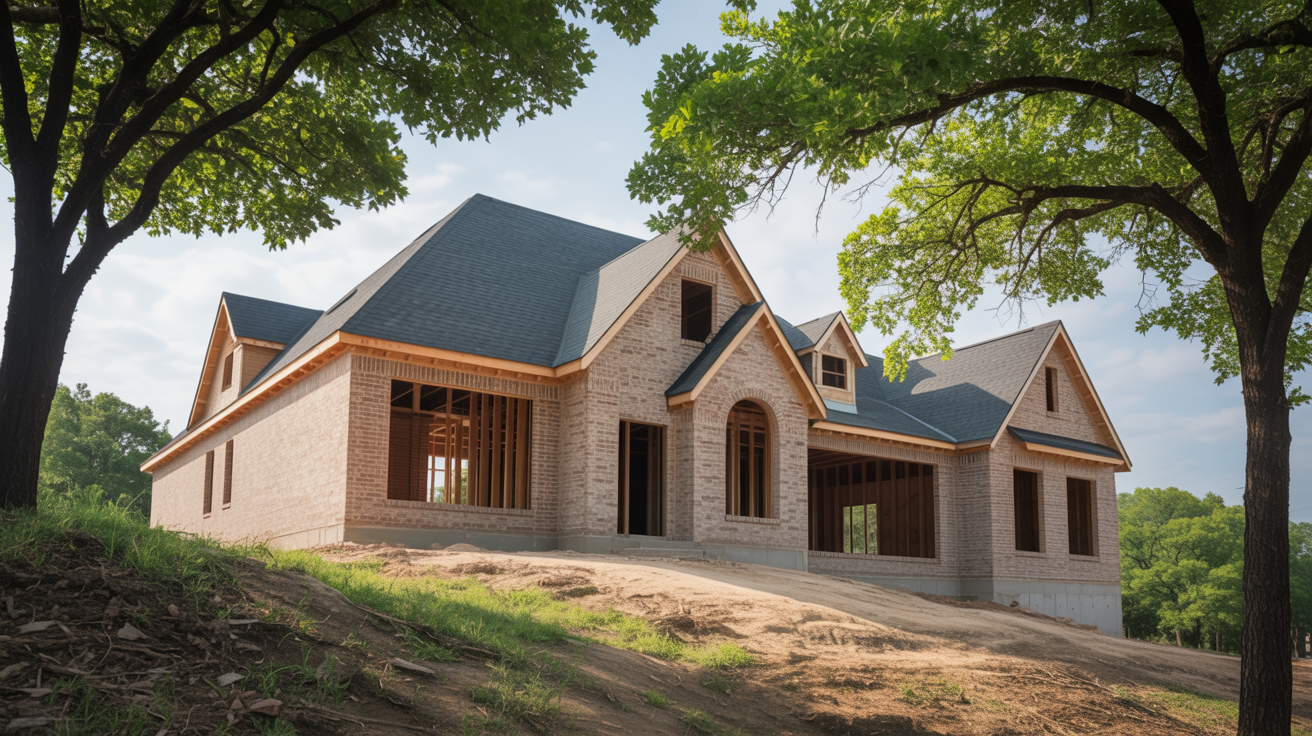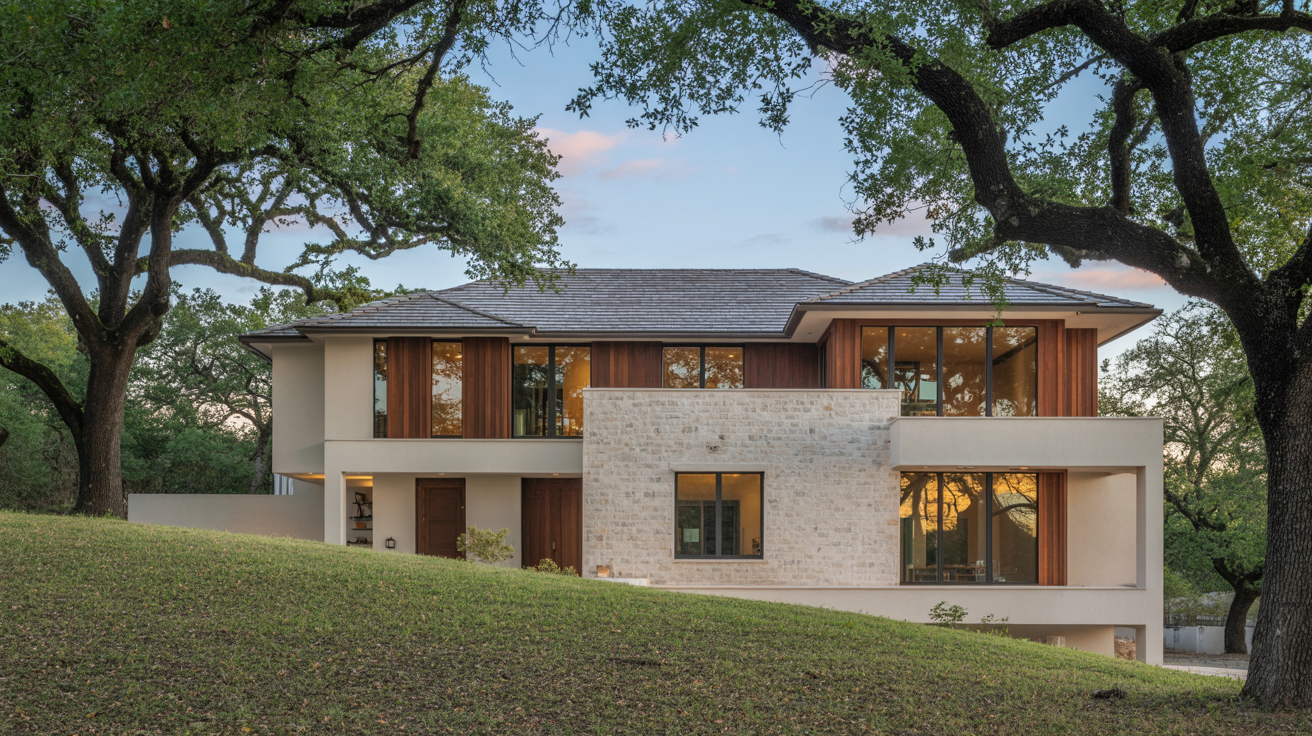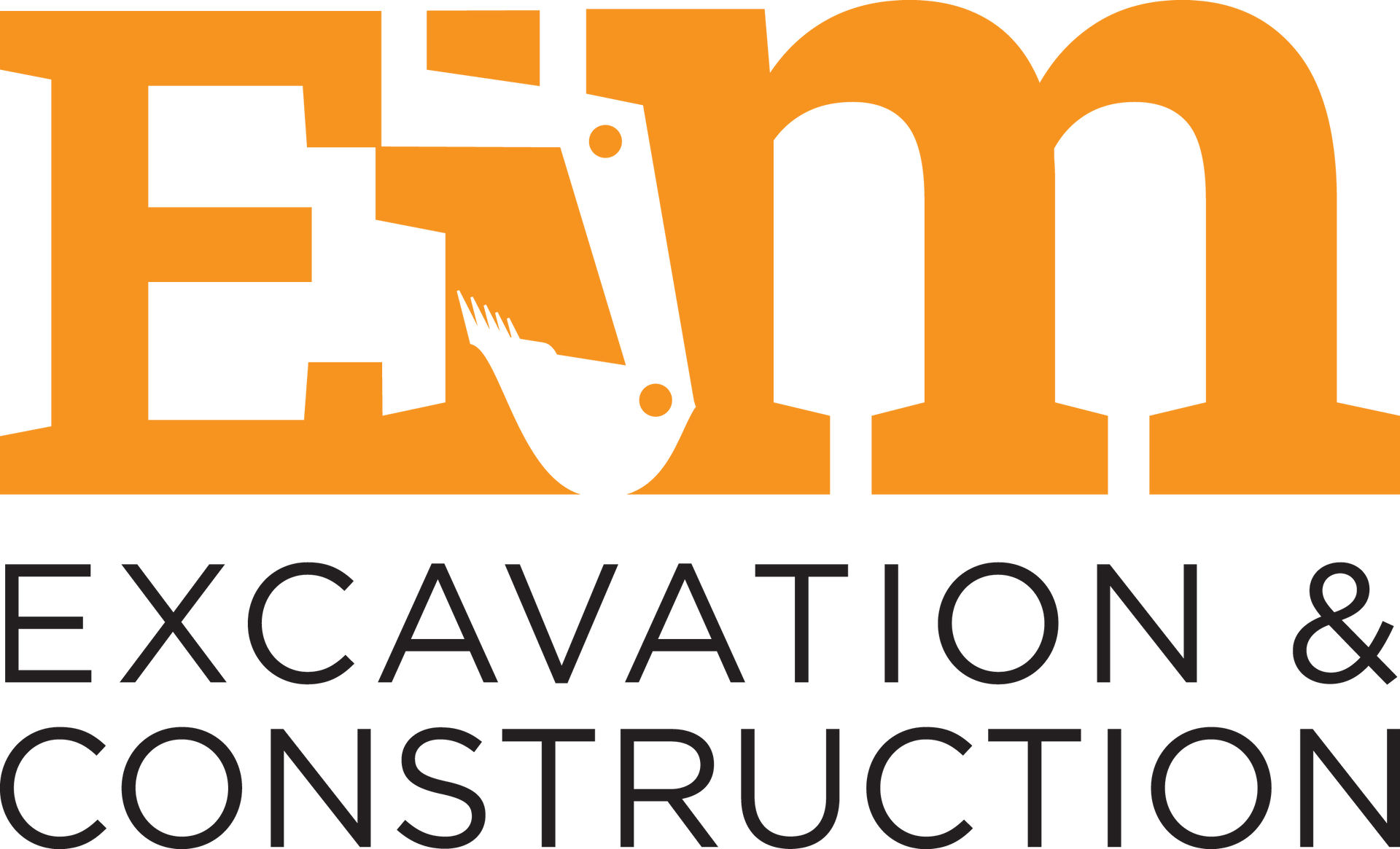Building Contractor in The Hills: Essential Guide for Hill Country Construction Projects
Finding the Right Building Contractor in The Hills: A Veteran's Guide to Quality Construction

When you're searching for a building contractor in The Hills, you're not just looking for someone who can swing a hammer or pour concrete. You need a partner who understands the unique challenges of hill country construction, someone who can navigate complex terrain while delivering the quality your vision deserves. After 20 years in construction and founding Earth in Motion in 2005, I've learned that successful hill projects require more than standard building practices—they demand specialized expertise, careful planning, and unwavering attention to detail.
The hills present construction challenges you won't find in flat terrain. Whether you're building in the rolling landscapes of central Texas near Austin or tackling steep grades in Colorado mountain communities, your contractor needs to understand how topography affects everything from foundation work to drainage systems. I've seen too many projects go sideways because contractors underestimated the complexities of building on sloped or uneven ground.
Understanding Hill Country Construction Challenges
Building in hilly terrain isn't just about adapting to the slope. When I work on projects in areas like the Texas Hill Country around Austin, several factors immediately come into play that flat-ground contractors often overlook. The soil composition changes dramatically with elevation, water runoff patterns become critical considerations, and access for equipment and materials requires careful planning.
During my military service, I learned that preparation prevents poor performance. This principle applies directly to construction work in challenging terrain. Your contractor should conduct thorough site analysis before breaking ground, understanding how seasonal weather patterns affect the specific location, and planning for drainage solutions that protect your investment long-term.
Rock formations present another common challenge in hill construction. In many areas around Austin and throughout Texas hill country, limestone and other rock layers can appear unexpectedly during excavation. An experienced contractor anticipates these possibilities and includes contingency plans in project timelines and budgets.
Site Preparation and Access Solutions
One of the first things I evaluate on any hill project is site accessibility. How do we get equipment to the building location? What's the best approach for material deliveries? These questions might seem simple, but they significantly impact project costs and timelines.
I've worked on projects where we needed to create temporary access roads, install retaining walls before beginning the main construction, or use specialized equipment designed for steep terrain. Each solution requires careful engineering and adds complexity to the project, but when done properly, these preparations ensure smooth construction phases later.
Grading work in hilly areas requires particular expertise. You're not just creating a level building pad—you're managing water flow, preventing erosion, and maintaining the natural beauty that probably drew you to the hillside location in the first place. This balance between functionality and aesthetics is where experienced hill country contractors prove their value.
Navigating Permits and Regulations for Hill Construction
Building permits in hill country areas often involve additional layers of complexity compared to standard residential construction. Local jurisdictions typically have specific requirements for construction on slopes, setback requirements that account for drainage patterns, and environmental considerations that protect natural watersheds.
During my years running Earth in Motion, I've learned that successful permit acquisition starts with understanding local regulations before design work begins. This proactive approach prevents costly redesigns and delays once construction is ready to start. Your contractor should be intimately familiar with local building codes and have established relationships with permitting offices.
Environmental impact considerations often play a larger role in hill construction projects. Erosion control measures, tree preservation requirements, and stormwater management plans frequently require specialized documentation and ongoing compliance during construction. These aren't obstacles—they're responsible practices that protect the environment and your property's long-term value.
Working with Local Authorities
Inspection schedules for hill projects often differ from standard construction timelines. Foundation inspections might require multiple visits as different elevation levels are completed. Drainage system inspections become more critical when natural water flow patterns are affected by construction.
I've found that maintaining open communication with local inspectors throughout the project helps identify potential issues before they become problems. This collaborative approach, something I learned during military service, ensures projects stay on track and meet all regulatory requirements.
Choosing Quality Materials for Hill Country Conditions
Material selection for hill construction requires understanding how different products perform in specific environmental conditions. The materials that work perfectly in flat suburban developments might not be the best choice for hillside construction where temperature variations, wind exposure, and moisture patterns create different stress patterns.
Foundation materials deserve special attention in hill construction. The type of foundation system—whether it's a traditional slab, pier and beam, or specialized hillside foundation—depends on soil conditions, slope angle, and local building requirements. I've seen projects where contractors chose inappropriate foundation systems, leading to settling issues and structural problems years later.
Drainage materials and systems become even more critical in hill construction. Surface drainage, subsurface drainage, and foundation waterproofing must work together as an integrated system. This isn't an area where you want to cut corners or use inferior products.
Weatherproofing and Durability Considerations
Hill locations often experience more extreme weather conditions than protected valley locations. Higher elevations mean greater wind exposure, temperature variations can be more dramatic, and precipitation patterns may differ from surrounding flat areas.
Your building materials need to handle these conditions throughout the structure's lifespan. This means selecting roofing materials rated for wind speeds common to your elevation, choosing siding and exterior finishes that can handle temperature cycling, and ensuring proper insulation for energy efficiency in varying conditions.
I always recommend investing in quality materials upfront rather than dealing with premature replacement costs later. The initial investment in durable, weather-appropriate materials pays dividends through reduced maintenance costs and longer service life.
Project Management for Hill Construction Success
Managing construction projects in hilly terrain requires different scheduling approaches than standard construction. Weather windows become more critical, equipment logistics need more lead time, and sequential construction phases must account for terrain challenges.
Communication becomes even more important when dealing with the complexities of hill construction. Your contractor should provide regular updates about progress, explain how terrain factors are being addressed, and involve you in decisions that affect the final outcome. This transparent approach builds trust and ensures the final result matches your vision.
Timeline management for hill projects requires buffer time for weather delays, equipment challenges, and potential site discoveries. Experienced contractors build these contingencies into project schedules rather than creating unrealistic expectations about completion dates.
Quality Control in Challenging Conditions
Quality control measures become more important when working in challenging terrain. Standard construction practices need adaptation for sloped sites, and inspection protocols must account for access limitations and phased construction approaches.
I implement additional quality checkpoints throughout hill projects, ensuring each phase meets our standards before moving to the next construction stage. This systematic approach prevents problems from compounding and maintains quality standards throughout the project.
Documentation becomes particularly important for hill projects. Detailed photo records of foundation work, drainage installation, and structural elements help with future maintenance and provide valuable records for warranty purposes.
Cost Factors Unique to Hill Construction
Understanding cost factors for hill construction helps you make informed decisions about your project scope and budget planning. Several factors specific to hilly terrain affect overall project costs, and transparency about these elements helps prevent budget surprises during construction.
Site preparation costs typically represent a larger percentage of total project costs for hill construction. Grading work, access road creation, and utility connections often require more extensive work than similar projects on flat terrain. These aren't unnecessary expenses—they're essential investments in project success.
Equipment costs can be higher for hill projects due to specialized machinery requirements and longer setup times. Some equipment that works efficiently on flat sites becomes impractical on steep terrain, requiring alternative approaches that may take more time but deliver better results.
Long-term Value Considerations
While hill construction projects often involve higher initial costs than comparable flat-ground projects, they frequently deliver superior long-term value. Hillside locations typically offer better views, more privacy, and unique architectural opportunities that enhance property values.
Proper drainage systems and foundation work, while representing significant initial investments, protect your property value for decades. These systems prevent erosion damage, foundation settling, and water intrusion problems that could cost far more to address after construction is complete.
Energy efficiency considerations also affect long-term value. Hill locations often provide opportunities for passive solar design, natural ventilation, and other energy-saving features that reduce operating costs throughout the building's life.
Working with Earth in Motion for Your Hill Project
When you choose Earth in Motion for your hill construction project, you're partnering with a team that understands both the challenges and opportunities that come with building in challenging terrain. My military background taught me the importance of thorough planning, clear communication, and attention to detail—principles that apply directly to successful construction projects.
Our approach begins with comprehensive site analysis, understanding not just the immediate construction area but how your project fits into the broader landscape. This holistic view helps us design solutions that work with natural terrain features rather than fighting against them.
Project communication remains a top priority throughout construction. You'll receive regular updates about progress, explanations of how we're addressing terrain-specific challenges, and advance notice about upcoming construction phases that might affect your daily routine.
Quality Assurance and Long-term Support
Quality control measures on our hill projects go beyond standard construction practices. We understand that challenging terrain requires extra attention to detail, additional inspection points, and systematic verification that each construction phase meets our standards.
Our warranty coverage addresses the specific challenges of hill construction, providing you with confidence that drainage systems, foundation work, and structural elements will perform as designed. This comprehensive coverage reflects our commitment to long-term project success.
Post-construction support includes guidance about maintaining the specialized systems common to hill projects. Proper maintenance of drainage systems, understanding seasonal variations in your property's behavior, and knowing when to call for professional assistance help protect your investment for years to come.
Making Your Hill Construction Vision Reality
Every hill construction project represents a unique opportunity to create something special. The challenges that come with building in hilly terrain also create opportunities for innovative design solutions, stunning views, and properties that truly stand out from standard developments.
Success in hill construction comes from partnering with contractors who understand these opportunities and have the experience to navigate the challenges effectively. This means working with professionals who view terrain challenges as design opportunities rather than obstacles to overcome.
Your vision for a hill country property deserves a contractor who shares your commitment to quality and understands the specialized requirements of challenging terrain construction. Whether you're planning a custom home in the Texas Hill Country near Austin, developing commercial property on sloped terrain, or creating agricultural facilities that work with natural topography, the right contractor makes all the difference.
When you're ready to move forward with your hill construction project, remember that experience matters, communication is essential, and quality work creates lasting value. Choose a building contractor in The Hills who understands that your project's success depends on expertise, planning, and unwavering commitment to excellence.
FAQ About Building Contractors in The Hills
What makes hill construction different from building on flat terrain?
Hill construction presents unique challenges that require specialized expertise. At Earth in Motion, I've learned over 20 years that building in areas like the Texas Hill Country around Austin involves complex soil composition changes with elevation, critical water runoff management, and careful equipment access planning. Rock formations, particularly limestone layers common in Austin-area projects, can appear unexpectedly during excavation. We conduct thorough site analysis before breaking ground, understanding seasonal weather patterns and planning comprehensive drainage solutions that protect your investment long-term.
How do you handle permits and regulations for hill construction projects?
Permits for hill construction involve additional complexity compared to standard residential building. Local jurisdictions have specific requirements for construction on slopes, setback requirements for drainage patterns, and environmental considerations protecting natural watersheds. At Earth in Motion, I start permit acquisition by understanding local regulations before design work begins, preventing costly redesigns later. We maintain established relationships with permitting offices and handle environmental impact documentation, including erosion control measures, tree preservation requirements, and stormwater management plans throughout the construction process.
What factors affect the cost of building in hilly terrain?
Several terrain-specific factors influence hill construction costs. Site preparation typically represents a larger percentage of total project costs due to extensive grading work, access road creation, and complex utility connections. Equipment costs increase due to specialized machinery requirements and longer setup times for steep terrain. However, these investments in proper drainage systems and foundation work protect property values long-term and prevent expensive problems later. The scope complexity, material selection for weather exposure, and specialized foundation systems all contribute to final project costs.
How do you ensure quality control during challenging hill construction?
Quality control for hill projects requires adaptation of standard construction practices for sloped sites and specialized inspection protocols. At Earth in Motion, I implement additional quality checkpoints throughout each project phase, ensuring standards are met before advancing to the next construction stage. We maintain detailed photo documentation of foundation work, drainage installation, and structural elements for future maintenance and warranty purposes. Our systematic approach prevents problems from compounding while maintaining quality standards despite access limitations and challenging terrain conditions.
What long-term support do you provide after hill construction completion?
Post-construction support for hill projects includes comprehensive warranty coverage addressing specific terrain challenges like drainage systems, foundation work, and structural elements. At Earth in Motion, I provide guidance about maintaining specialized systems common to hill construction, helping you understand seasonal property variations and when to seek professional assistance. Our quality assurance extends beyond construction completion because we understand that challenging terrain requires ongoing attention to drainage maintenance, erosion prevention, and system performance monitoring to protect your investment for decades.



